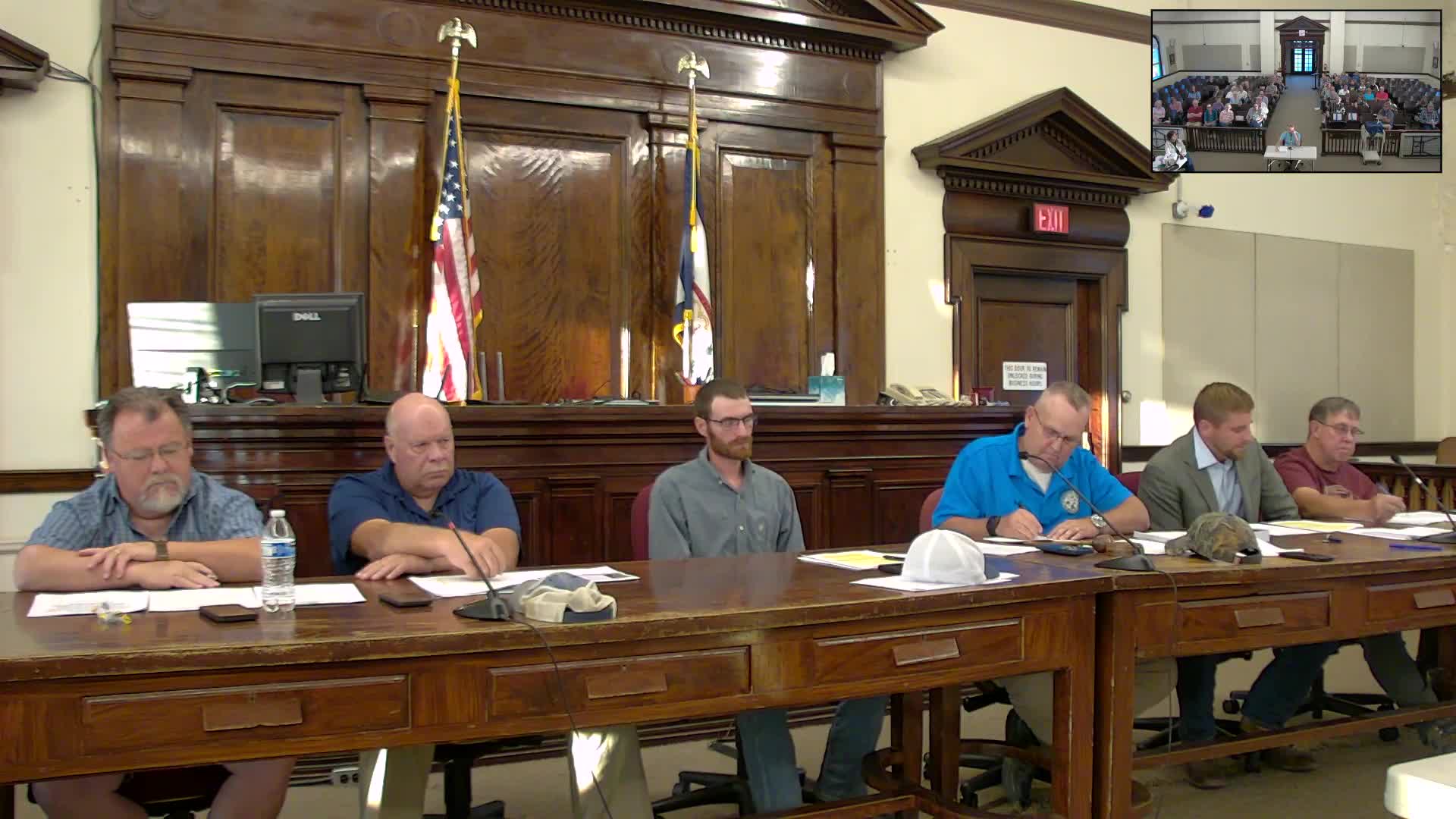Community demands transparency in solar farm regulations
August 23, 2024 | Hampshire County, West Virginia
This article was created by AI summarizing key points discussed. AI makes mistakes, so for full details and context, please refer to the video of the full meeting. Please report any errors so we can fix them. Report an error »

During a recent government meeting, significant discussions emerged regarding proposed amendments to local regulations governing solar farms. One key point raised was the suggestion to reduce the required setback distance for solar facilities from 250 feet to 100 feet or eliminate it altogether. This proposal was met with mixed reactions, particularly concerning the potential impact on invasive species and the ecological integrity of the land.
Participants emphasized the need for extended public notice periods for community input on solar farm applications. Currently set at 30 days, several attendees argued that this timeframe should be increased to 60 or even 90 days to ensure adequate public awareness and engagement. Concerns were voiced about the lack of a formal requirement for public posting or hearings related to these applications, which could lead to insufficient community involvement in decisions that significantly affect local landscapes.
The issue of property ganging—where companies consolidate multiple parcels of land for large solar projects—was also highlighted. One speaker pointed to a specific case involving the Benhanes property, where efforts are underway to amass up to 1,000 acres for solar development. The speaker urged the county to implement measures to prevent such practices, which can create disparities among neighboring property owners and lead to larger, more impactful projects.
Additionally, the meeting underscored the necessity for improved public communication regarding solar projects. Suggestions included enhancing the county's website and utilizing social media to disseminate information more effectively, rather than relying solely on traditional methods like courthouse postings.
The proposed amendments currently limit the maximum size of solar facilities to 500 acres, a point that was debated among attendees. While some expressed concerns that even this limit might be too high, others acknowledged that it could help prevent the extensive land consolidation seen in other counties.
Overall, the discussions reflected a community grappling with the balance between renewable energy development and environmental stewardship, highlighting the importance of public engagement in shaping local policies.
Participants emphasized the need for extended public notice periods for community input on solar farm applications. Currently set at 30 days, several attendees argued that this timeframe should be increased to 60 or even 90 days to ensure adequate public awareness and engagement. Concerns were voiced about the lack of a formal requirement for public posting or hearings related to these applications, which could lead to insufficient community involvement in decisions that significantly affect local landscapes.
The issue of property ganging—where companies consolidate multiple parcels of land for large solar projects—was also highlighted. One speaker pointed to a specific case involving the Benhanes property, where efforts are underway to amass up to 1,000 acres for solar development. The speaker urged the county to implement measures to prevent such practices, which can create disparities among neighboring property owners and lead to larger, more impactful projects.
Additionally, the meeting underscored the necessity for improved public communication regarding solar projects. Suggestions included enhancing the county's website and utilizing social media to disseminate information more effectively, rather than relying solely on traditional methods like courthouse postings.
The proposed amendments currently limit the maximum size of solar facilities to 500 acres, a point that was debated among attendees. While some expressed concerns that even this limit might be too high, others acknowledged that it could help prevent the extensive land consolidation seen in other counties.
Overall, the discussions reflected a community grappling with the balance between renewable energy development and environmental stewardship, highlighting the importance of public engagement in shaping local policies.
View full meeting
This article is based on a recent meeting—watch the full video and explore the complete transcript for deeper insights into the discussion.
View full meeting